News
What you need to know about Construction in VIC
If you are planning any building work in Victoria, it is important to understand the requirements for obtaining permits. The Building Act 1993 and Building Regulations 2018 state that all building work requires a building permit, unless an exemption exists. Additionally, certain projects may also require a planning permit from the local council. It is essential to seek advice from your local council or a building surveyor to determine the permits needed for your specific project.
Key Takeaways:
- Building work in Victoria requires a building permit, unless exempted.
- Some projects may also require a planning permit from the local council.
- Seek advice from your local council or building surveyor to determine the permits needed.
- Complying with permit requirements ensures legality and safety in construction projects.
- Understanding the regulations is crucial to navigate the construction process successfully.
Do I need a Planning Permit for my building project?
If you are considering embarking on a building project in Victoria, it is important to determine whether a planning permit is required for your specific project. Planning permits are necessary for certain types of construction, such as new homes, renovations, extensions, or additional dwellings.
The responsibility for issuing planning permits lies with the local council. To apply for a planning permit, you may need to provide design plans, reports, and other relevant documentation to support your application. The process and requirements for obtaining a planning permit can vary depending on the specific project and location.
To navigate the complexities of the planning permit process, it is highly recommended to consult with a town planner or reach out to your local council for guidance. A town planner can provide valuable insights into the planning requirements and help ensure that your project complies with local regulations and guidelines.
“A town planner can guide you through the planning permit application process and assist in ensuring your project aligns with local regulations and guidelines.”
By proactively addressing the planning permit requirements for your building project, you can prevent potential delays and setbacks during the construction phase. Consulting with a town planner or engaging with your local council demonstrates your commitment to following the necessary procedures and obtaining the required permits, helping to ensure a smooth and successful building project.
Understanding Building Permits
Building permits play a vital role in ensuring that construction projects in Victoria comply with building regulations. They serve as written approvals that indicate the involvement of registered building practitioners with the necessary insurance. These permits also outline the mandatory inspections that will take place throughout the project, ensuring that the construction work meets the required standards.
Upon completion of the building work, the building permit will require either an occupancy permit or a certificate of final inspection, depending on the scope of the project. These documents confirm that the building has been constructed in accordance with the approved plans and meets all the necessary safety and compliance requirements.
Obtaining a building permit is an essential step in the construction process, as it ensures that the building work is carried out legally and safely. It also serves as a safeguard for both the property owner and the community at large, ensuring that buildings are constructed to the highest standards of quality and safety.
The Importance of Building Regulations
Building regulations exist to protect the safety, health, and welfare of people who live in or use buildings. They cover various aspects of construction, such as structural stability, fire safety, energy efficiency, accessibility, and more. Compliance with these regulations ensures that buildings are safe, comfortable, and suitable for their intended purposes.
“Building regulations provide a framework for the design, construction, and maintenance of buildings. They ensure that buildings are structurally sound, energy-efficient, and compliant with essential safety requirements.”
Building practitioners, including architects, engineers, and builders, play a crucial role in ensuring compliance with these regulations. Their expertise and knowledge of the building codes and standards contribute to the successful completion of construction projects that meet all the necessary requirements.
Inspections and Compliance
Throughout the construction process, mandatory inspections are conducted to assess compliance with building regulations. These inspections are carried out by qualified building surveyors or inspectors who verify that the work being done aligns with the approved plans and meets the relevant building standards.
The inspections typically cover various stages of construction, such as foundation, framing, plumbing, electrical, and final completion. This ensures that each aspect of the building work is inspected at critical points to identify any potential issues or deviations from the approved plans.
By conducting these inspections, building practitioners can address any non-compliance or deficiencies promptly, ensuring that the construction work is brought back into compliance. This helps to maintain the integrity and quality of the building and safeguard the interests of both the property owner and the community.
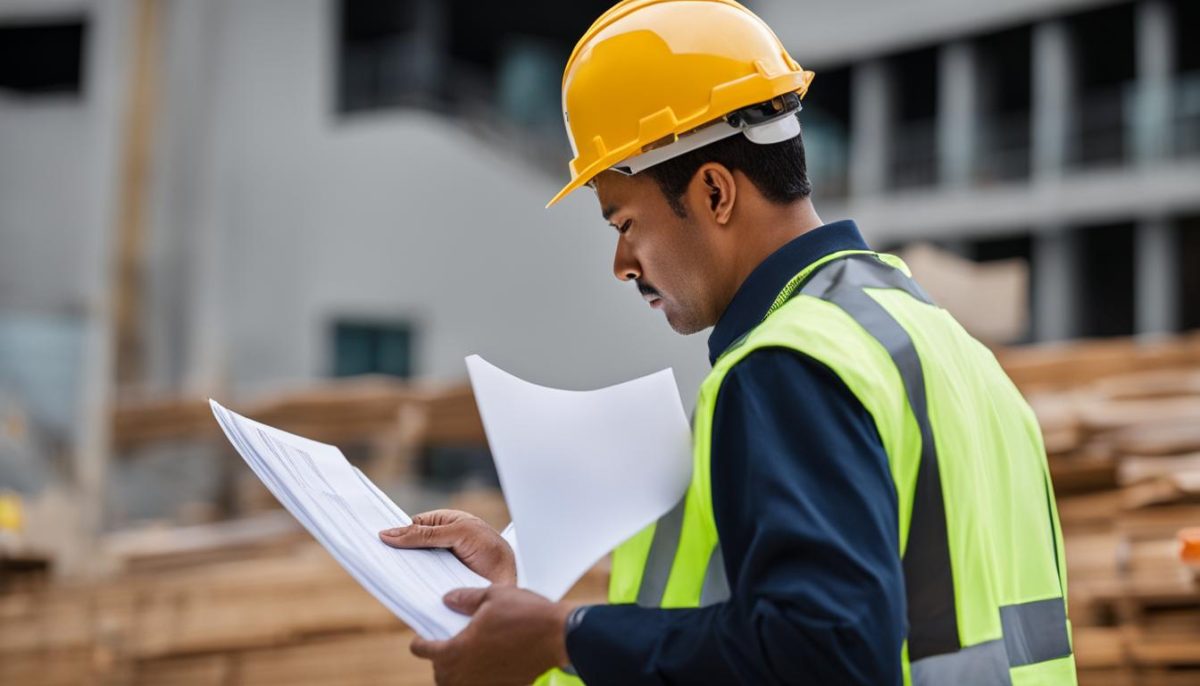
In summary, building permits are essential documents that provide written approval for construction work, indicating compliance with building regulations. These permits, along with mandatory inspections, ensure that buildings are safely and legally constructed. By obtaining the necessary permits and adhering to the inspection process, building practitioners can contribute to the creation of safe and compliant structures that benefit the entire community.
Exemptions from Building Permits
In certain cases, building projects may be exempt from requiring a building permit. These exemptions can apply to various situations, such as minor alterations or demolitions, the construction of pergolas associated with houses, the installation of garden sheds with a floor area less than 10m2, and repair work for maintenance purposes. It is important to note that exemptions may vary depending on local regulations and conditions; therefore, it is advisable to consult with a qualified building surveyor or relevant authorities to confirm if your specific project qualifies for an exemption.
Applying for a Building Permit
When it comes to applying for a building permit in Victoria, it’s important to have a registered building surveyor by your side. They will provide the guidance and expertise needed to navigate the permit application process smoothly.
During the application process, you will need to submit various documents, including detailed drawings, specifications, and other relevant paperwork. These documents will help assess the feasibility and compliance of your proposed building project.
Once you have gathered all the necessary documentation, you will need to complete the application form. This form serves as your formal request for a building permit and provides essential information about your project, such as the scope of work and estimated timeline.
It’s important to note that there is a building permit levy associated with obtaining a building permit. The levy is based on the cost of the building work and helps fund the administration and enforcement of building regulations. To ensure a smooth permit application process, make sure to pay the building permit levy to the Victorian Building Authority before the permit is issued.
By working closely with a registered building surveyor and fulfilling all the necessary requirements, you can ensure a successful application for your building permit. This will set you on the right path towards bringing your construction project to life.
Building Permit Issuance and Inspections
Once you have obtained the relevant planning permit for your building project, the next step is to secure a building permit. A building permit is essential as it ensures that your proposed construction work aligns with the building regulations and meets the required standards.
In this section, we will explore the process of building permit issuance and the mandatory inspections that will be conducted throughout the construction phase. Additionally, we will discuss the occupancy permit and certificate of final inspection that may be required upon completion of the building work.
Building Permit Issuance
Before a building permit can be issued, it is crucial to acquire the relevant planning permit, if applicable. The planning permit ensures that your project complies with the local council’s land use and development requirements.
Once the planning permit is in place, you can proceed with the application for a building permit. The building surveyor responsible for approving the permit will review your plans and documentation to ensure that they adhere to the building regulations and standards.
The building permit may be issued with or without conditions. If conditions are imposed, they must be satisfied during the construction process to meet the necessary compliance.
Mandatory Inspections
Throughout the construction phase, mandatory inspections will be conducted to ensure that the work is carried out correctly and complies with the approved plans and building regulations.
The building permit will specify the inspections that are required at various stages of the construction process, such as foundation, framing, plumbing, and electrical installations. These inspections are crucial to verify the quality and safety of the building work.
Once the mandatory inspections have been completed and any necessary improvements or corrections have been made, the building surveyor will issue an occupancy permit or a certificate of final inspection, depending on the scope and nature of the project.

Having a proper building permit, along with the required inspections, is essential to ensure that your construction project meets the necessary standards and regulations. It guarantees the safety and quality of the building work.
Commencement and Completion Dates for Building Work
In Victoria, the commencement and completion dates for building work are specified by the Regulations. It is important to adhere to these timelines to ensure the smooth progress of your project and to avoid any potential issues.
Types of Building Work
Building work can vary in nature and scale, ranging from minor alterations to large-scale constructions. Some common types of building work include:
- Residential construction
- Commercial construction
- Renovations and additions
- Demolitions
Each type of building work may have different requirements and specifications, including specific commencement and completion dates.
Lapsed Permits
If you fail to commence or complete the building work within the specified dates, your building permit may lapse. A lapsed permit means that the approval for your project becomes invalid, and you will need to reapply for a new permit to continue the work.
However, if you find it challenging to meet the deadlines, you can request an extension from your building surveyor. It is crucial to communicate any delays or difficulties you encounter to ensure that your project remains compliant and on track.
Requesting an extension is an opportunity to discuss the reasons for the delay and to work with the building surveyor to determine a suitable timeframe for the completion of the project.
Building Work Commencement and Completion Dates
| Type of Building Work | Commencement Date | Completion Date |
|---|---|---|
| Residential Construction | Within 12 months from the date of the building permit | Varies depending on the scale and complexity of the project |
| Commercial Construction | Within 24 months from the date of the building permit | Varies depending on the scale and complexity of the project |
| Renovations and Additions | Within 6 months from the date of the building permit | Varies depending on the extent of the renovations or additions |
| Demolitions | Commencement must be within 30 days from the date of the building permit | Varies depending on the scale and complexity of the demolition |
It is important to note that the completion dates provided in the table are general guidelines and may vary based on the specific circumstances and requirements of your project. Always consult with your building surveyor for accurate information regarding the commencement and completion dates for your particular building work.
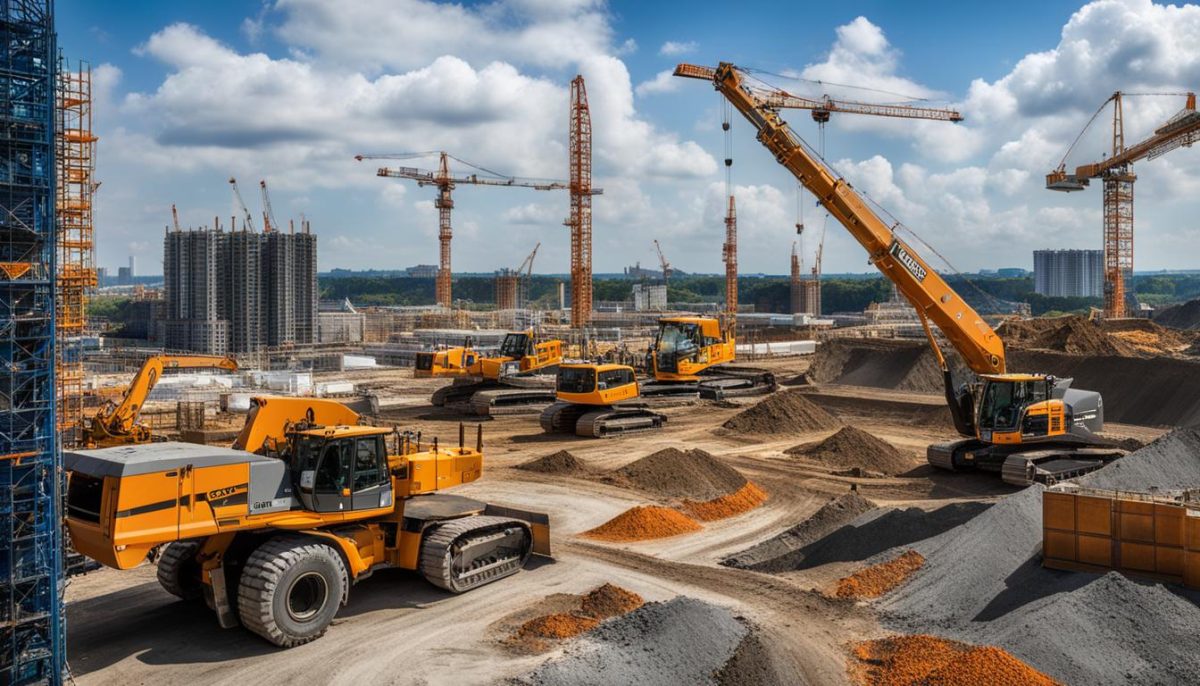
Construction Industry Regulators in Victoria
When it comes to the construction industry in Victoria, several regulators play an important role in ensuring safety, compliance, and the protection of both workers and the environment. These regulators provide guidance, information, and enforce regulations to promote best practices in the construction sector. Let’s take a closer look at the key regulators:
Energy Safe Victoria (ESV) oversees electrical safety in Victoria. Their focus is on ensuring that electrical installations, appliances, and equipment are safe for use. They work closely with industry stakeholders to develop and enforce electrical safety standards.
The Environment Protection Authority (EPA) is responsible for environmental regulations in Victoria. Their role is to protect and enhance the environment by managing pollution, waste, and other environmental impacts. The EPA collaborates with construction businesses to ensure compliance with environmental standards and promote sustainable practices.
The Victorian Building Authority (VBA) serves as the regulator for the building and plumbing industries in Victoria. They are responsible for setting and enforcing standards for building and plumbing work, ensuring that practitioners meet the required qualifications, and issuing licenses and registrations. The VBA also provides information and support to builders, homeowners, and industry professionals.
WorkSafe is the main regulatory body for workplace health and safety in Victoria. Their mission is to prevent workplace injuries, illnesses, and fatalities by promoting safe work practices and enforcing compliance with occupational health and safety legislation. WorkSafe works closely with the construction industry to create a safe and healthy working environment for everyone involved.
These regulators play a crucial role in the construction industry, ensuring that construction projects adhere to safety standards, protect the environment, and comply with relevant laws and regulations. Whether it’s electrical safety, environmental protection, building and plumbing standards, or workplace health and safety, these regulators work tirelessly to promote a safe and well-regulated construction sector in Victoria.
Construction Industry Regulators
| Regulator | Responsibility |
|---|---|
| Energy Safe Victoria (ESV) | Electrical safety |
| Environment Protection Authority (EPA) | Environmental regulations |
| Victorian Building Authority (VBA) | Building and plumbing industries |
| WorkSafe | Workplace health and safety |
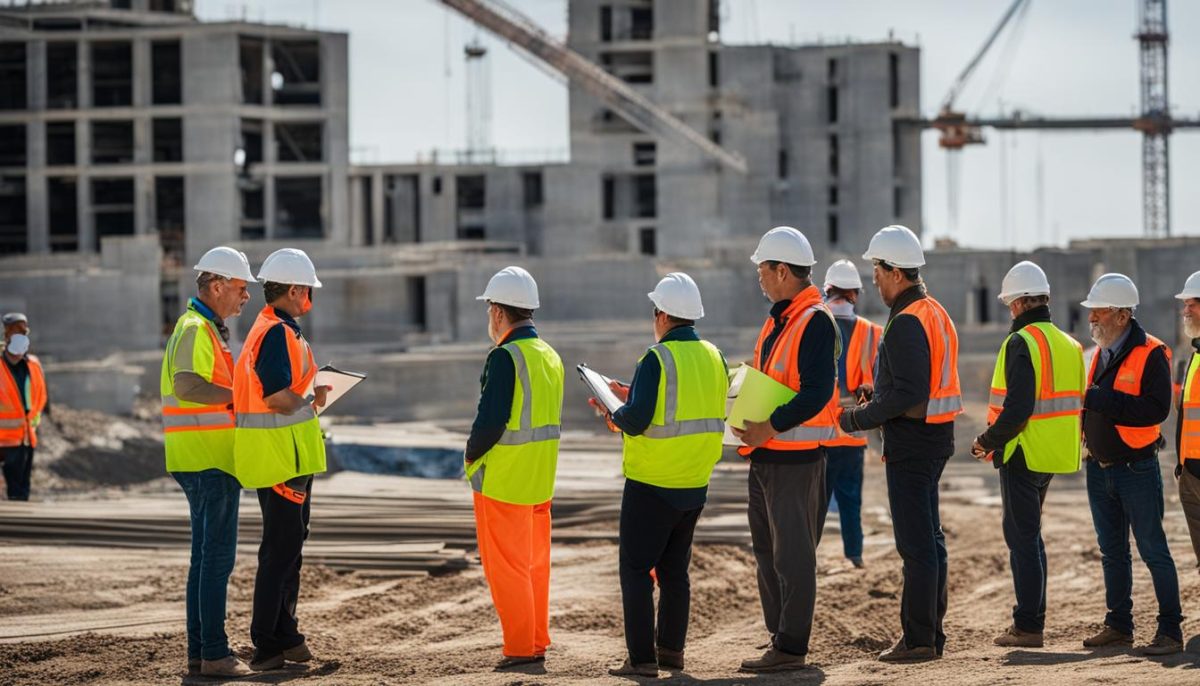
Licensing and Registration Requirements
Various trades in the construction industry require registration or licensing in Victoria. Plumbers must apply for plumbing registration and license through the Victorian Building Authority, while building practitioners need to register with the VBA based on their specific category. Electricians and electrical tradespersons must be licensed and registered with Energy Safe Victoria. It is essential to meet these requirements to practice the respective trades legally.
| Trade | Registration/Licensing Body |
|---|---|
| Plumber | Victorian Building Authority (VBA) |
| Building Practitioner | Victorian Building Authority (VBA) |
| Electrician / Electrical Tradesperson | Energy Safe Victoria |
Whether it’s trade registration, plumbing registration, building practitioner registration, or obtaining electrical licenses, complying with the registration and licensing requirements is crucial for practicing construction trades legally in Victoria.

City of Melbourne Code of Practice for Building, Construction, and Works
The City of Melbourne has implemented a comprehensive Code of Practice for Building, Construction, and Works to ensure the safety, efficiency, and integrity of construction activities that impact public space. This Code plays a crucial role in safeguarding the community, protecting municipal assets, and preserving the overall amenity of the city.
The Code of Practice covers various essential aspects that must be adhered to during building and construction projects. It includes enforceable guidelines regarding:
- Construction management plans
- Stakeholder engagement and communication
- Noise and dust controls
- Safe use and operation of equipment
Compliance with the City of Melbourne Code of Practice is of utmost importance to ensure that building and works activities are carried out in a manner that minimizes risks and disruptions to the community. By following the Code, construction industry professionals and practitioners contribute to creating a safe, harmonious, and sustainable urban environment.
“We have developed the Code of Practice for Building, Construction, and Works to enhance safety, protect our municipal assets, and enhance the overall quality of life for residents and visitors in the City of Melbourne.”
City of Melbourne Building and Construction Department
Through the City of Melbourne Code of Practice, the responsible authorities strive to promote excellence in construction practices, foster community collaboration, and ensure that all building and construction works comply with relevant local laws and standards.
Beneficial Public Space Management
The Code of Practice places a specific emphasis on managing public space during construction and works activities. By consulting and collaborating with stakeholders, construction professionals can plan and implement projects in a way that minimizes disruptions to the public and maximizes safety.
Efficient management of public space includes:
- Maintaining clear pedestrian access
- Providing visible and accessible signage
- Implementing appropriate traffic management measures
By meticulously adhering to public space guidelines outlined in the Code, construction professionals contribute to a positive community experience during the various stages of building and construction projects.
Protection of Municipal Assets
The Code of Practice upholds the importance of protecting municipal assets throughout the construction process. This includes safeguarding public infrastructure, street furniture, trees, and heritage buildings from damage or disruption caused by construction activities.
By adhering to the Code, construction professionals actively contribute to the preservation and longevity of the City of Melbourne’s valuable municipal assets, further enhancing its aesthetic appeal and historical significance.
| Code Compliance Benefits | Code Compliance Responsibilities |
|---|---|
| Enhanced safety for construction workers, stakeholders, and the public | Implementation of construction management plans |
| Minimized noise and dust impact on neighboring properties | Effective stakeholder engagement and communication |
| Meticulous use and maintenance of construction equipment | Comprehensive noise and dust control measures |
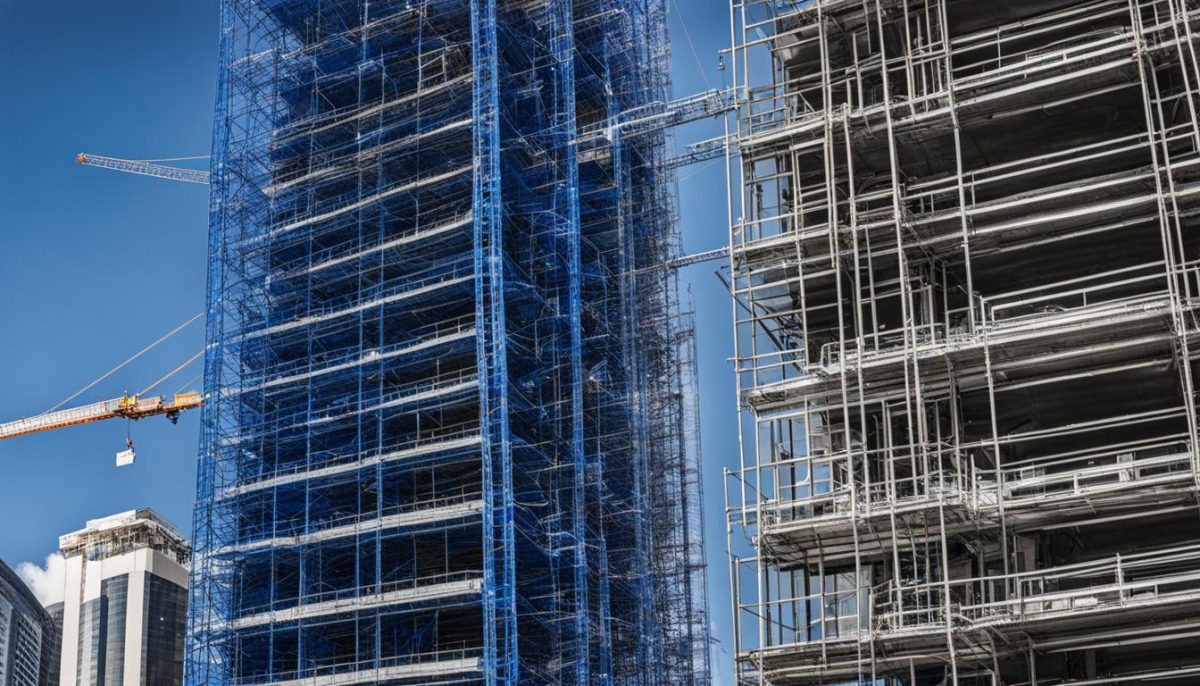
Compliance with the City of Melbourne Code of Practice for Building, Construction, and Works is a legal requirement and a professional obligation. Failure to comply with the Code may lead to penalties and potential legal consequences.
The Code and the Law
In Melbourne, the Code of Practice for Building, Construction, and Works aligns with the Activities Local Law to prioritize safety, enhance amenity, and minimize risks and disruptions associated with construction activities. Our commitment to compliance with the law is reflected in the Code, which serves as a guide for all those involved in construction and works activities within the City of Melbourne.
By understanding and adhering to the Code’s requirements, we ensure that our projects not only meet the necessary legal standards but also contribute to the overall safety and well-being of the community.
The Importance of Safety
The Code places a strong emphasis on safety, ensuring that construction activities are carried out in a manner that protects workers, visitors, and the general public. It provides guidelines and standards for the implementation of safety measures, such as proper signage, hazard identification, and the use of personal protective equipment. Safety inspections and risk assessments are also crucial components of the Code, helping to prevent accidents and promote a secure working environment.
Enhancing Amenity
Maintaining the amenity of the community during construction is another key aspect of the Code. It encourages construction sites to minimize noise and dust, regularly clean the surrounding areas, and implement measures to mitigate the impact on neighboring properties. By prioritizing amenity, we aim to ensure that construction activities integrate harmoniously with the surrounding environment, minimizing any inconvenience or disruption caused to residents and businesses.
“Safety and amenity are our top priorities. The Code of Practice for Building, Construction, and Works guides our actions, ensuring that we comply with laws and regulations while safeguarding the well-being of the community.”
– John Smith, Construction Manager
Managing Risks and Disruptions
Construction activities inherently pose certain risks and can cause temporary disruptions. The Code recognizes this and provides strategies for managing these challenges effectively. It emphasizes the importance of careful planning, coordination, and communication between relevant parties to minimize the impact on transportation, access to public spaces, and nearby businesses. Through proactive measures and collaboration, we strive to ensure that construction projects coexist harmoniously with the daily activities of the city.
By adhering to the Code, we demonstrate our commitment to creating a safe and welcoming environment for all residents, workers, and visitors in Melbourne. Our collective efforts contribute to the sustainable development of the city and its ongoing prosperity.
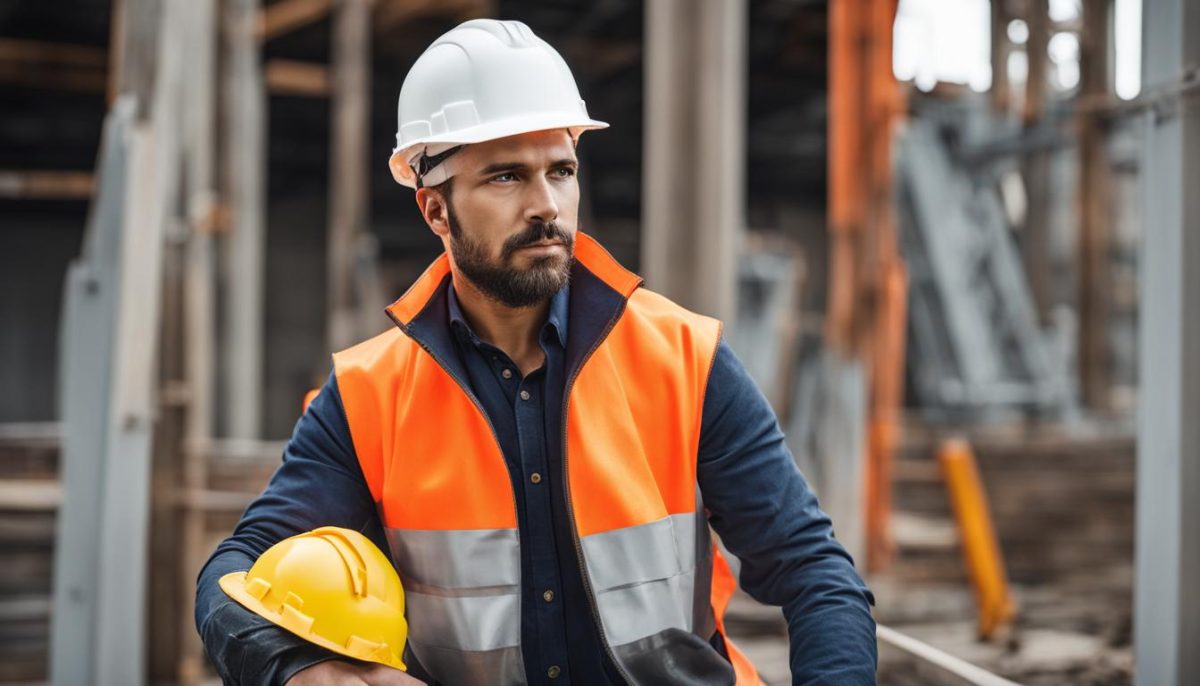
Developing the Code
The City of Melbourne’s Code of Practice for Building, Construction, and Works underwent a comprehensive two-year period of review and consultation to ensure its effectiveness and relevance. During this process, we actively sought input from various stakeholders, including industry professionals, community representatives, and government agencies.
Our objective was to gather diverse perspectives and insights to create a comprehensive and robust set of guidelines for construction and works activities in the municipality. By considering the feedback and experiences of those involved in the industry, we aimed to develop a Code that addresses the needs and concerns of all stakeholders.
We believe that collaboration and engagement are crucial elements in developing effective regulations and guidelines. By working together with industry experts, community members, and government agencies, we can create a Code that promotes best practices, safeguards public interests, and fosters sustainable development.
The culmination of this extensive review and consultation process was the adoption of the Code by the Future Melbourne Committee of Council. This committee, comprised of elected officials and subject matter experts, carefully evaluated the Code to ensure its alignment with the strategic objectives and priorities of the City of Melbourne.
Once the Code was approved by the Future Melbourne Committee, it was published in the Victorian Government Gazette, making it official and providing clear guidance for construction and works activities within the municipality.
Benefits of the Developed Code
The development of the Code of Practice for Building, Construction, and Works through a thorough review and consultation process brings several benefits to the construction industry in Melbourne:
- Improved Clarity: The Code provides clear guidelines and requirements, ensuring that everyone involved in construction and works activities understands their obligations.
- Enhanced Safety: By incorporating best practices and safety standards, the Code contributes to creating safer work environments, protecting workers and the public alike.
- Streamlined Processes: The Code streamlines processes and procedures, helping to avoid confusion, delays, and potential conflicts during construction projects.
- Consistency: With the Code in place, there is a consistent framework for construction and works activities throughout the municipality, fostering predictability and adherence to standards.
The development of the Code of Practice for Building, Construction, and Works showcases our commitment to ensuring that the construction industry in Melbourne operates in a safe, sustainable, and efficient manner. By involving stakeholders and considering diverse perspectives, we have created a valuable resource that promotes responsible construction practices.

Conclusion
Understanding the regulations and requirements for construction in Victoria is crucial to ensure compliance and safety. Whether you are planning a small renovation or a large-scale construction project, obtaining the necessary permits, such as planning permits and building permits, is essential. These permits not only demonstrate compliance with the Building Act 1993 and Building Regulations 2018 but also ensure that your project meets the necessary standards and regulations.
Additionally, it is important to adhere to the City of Melbourne’s Code of Practice for Building, Construction, and Works. This code aims to maintain the safety and amenity of public spaces while protecting municipal assets. By following these guidelines, you contribute to creating a safe and comfortable environment for everyone in the community.
Throughout the construction process, it is essential to work closely with the appropriate regulators, such as the Victorian Building Authority (VBA) and Energy Safe Victoria, to ensure compliance with all relevant regulations and to address any concerns or issues that may arise. By doing so, you can navigate the construction process in Victoria successfully, ensuring the safety of your project and the well-being of the community.
FAQ
Do I need a planning permit for my building project?
Certain building projects, such as new homes, renovations, extensions, or additional dwellings, may require a planning permit from the local council. It is recommended to consult a town planner or contact your local council for more information on the process and requirements for obtaining a planning permit.
What are building permits and why are they necessary?
Building permits are required to ensure that proposed buildings comply with building regulations. They provide written approval for the construction work, indicating that the building practitioners involved are registered and have the required insurance. The building permit also specifies the mandatory inspections that will be conducted throughout the project and whether an occupancy permit or a certificate of final inspection is required upon completion of the work.
What building projects are exempt from requiring a building permit?
Some exemptions from building permits include minor alterations or demolitions, pergolas associated with houses, garden sheds with a floor area less than 10m2, and repair work for maintenance purposes. However, it is important to consult with a building surveyor or relevant authorities to confirm if your specific project qualifies for an exemption.
How do I apply for a building permit?
To apply for a building permit, you need to appoint a registered building surveyor who will guide you through the process. The application will require submission of drawings, specifications, and other relevant documents, along with the completed application form. Additionally, a building permit levy based on the cost of the building work must be paid.
When can a building permit be issued?
A building permit cannot be issued until a relevant planning permit (if required) is obtained. The building surveyor may issue the building permit with or without conditions. The permit will specify the mandatory inspections that will be conducted during the construction process. The building permit will also indicate whether an occupancy permit or a certificate of final inspection is required upon completion of the building work.
What are the commencement and completion dates for building work?
The regulations specify the commencement and completion dates for different types of building work. Failure to commence or complete the work within these specified times may result in the building permit lapsing. However, if you are unable to meet the deadlines, you can request an extension from your building surveyor.
What is the construction industry like in Victoria?
The construction industry in Victoria is the largest full-time employer and is primarily composed of small businesses. Out of the 127,381 building and construction businesses in Victoria, 93% are either sole traders or businesses hiring up to four employees. Regulatory bodies oversee the industry and ensure businesses and tradespeople comply with registration and licensing requirements.
Which regulators oversee the construction industry in Victoria?
Several regulators in Victoria oversee and regulate the construction industry. Energy Safe Victoria (ESV) is responsible for electrical safety, while the Environment Protection Authority (EPA) focuses on environmental regulations. The Victorian Building Authority (VBA) is the regulator for the building and plumbing industries, and WorkSafe ensures workplace health and safety. These regulators provide guidance and information on licensing, registration, and compliance requirements.
Do trades in the construction industry require registration or licensing in Victoria?
Yes, various trades in the construction industry require registration or licensing in Victoria. Plumbers must apply for plumbing registration and license through the Victorian Building Authority, while building practitioners need to register with the VBA based on their specific category. Electricians and electrical tradespersons must be licensed and registered with Energy Safe Victoria.
What is the City of Melbourne Code of Practice for Building, Construction, and Works?
The City of Melbourne has a Code of Practice for Building, Construction, and Works, which regulates works that affect public space. The Code ensures the safety and amenity of the community and the protection of municipal assets. It covers various aspects, including construction management plans, stakeholder engagement, noise and dust controls, and use of equipment.
How does the City of Melbourne Code of Practice align with the local law?
The City of Melbourne’s Code of Practice for Building, Construction, and Works aligns with the Activities Local Law in Melbourne, which aims to improve safety and amenity while minimizing risks and disruptions caused by construction activities. The Code is designed to help achieve these goals and ensure compliance with the law.
How was the City of Melbourne Code of Practice developed?
The City of Melbourne’s Code of Practice for Building, Construction, and Works underwent a two-year period of review and consultation. The development process involved gathering input from various stakeholders, and the Code was finally adopted by the Future Melbourne Committee of Council. The Code became effective after publication in the Victorian Government Gazette.
What do I need to know about construction in Victoria?
Understanding the regulations and requirements for construction in Victoria is crucial to ensure compliance and safety. Obtaining the necessary permits, such as planning permits and building permits, is essential for undertaking building work. Adhering to the City of Melbourne’s Code of Practice for Building, Construction, and Works is necessary to ensure the safety and amenity of the public and protect municipal assets.
